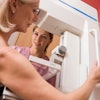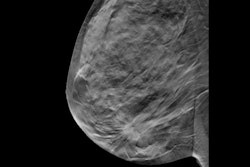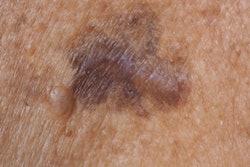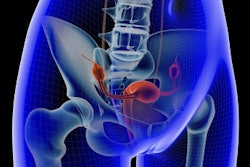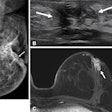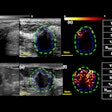Accelerated partial breast irradiation (APBI) may lead to better outcomes for women being treated for ductal carcinoma in situ (DCIS), suggest findings published May 23 in Advances in Radiation Oncology.
When used as a part of breast-conserving therapy for DCIS, APBI led to excellent survival rates, local control, and cosmetic outcomes, wrote a team led by Imran Zoberi, MD, from Washington University in St. Louis, MO. And these trends persisted with all radiation therapy modalities included in the study.
“Based on our institutional experience, APBI as a part of the breast-conserving therapy paradigm for patients with DCIS results in excellent outcomes,” the Zoberi team wrote.
Previous studies indicate that APBI leads to lower rates of toxicity and improved cosmesis compared with whole-breast irradiation, owing to its targeted nature toward treating a smaller volume of breast tissue. Furthermore, treatment times incorporating APBI have been reported to be shorter than conventional whole-breast irradiation by weeks.
Zoberi and colleagues reported long-term institutional outcomes for DCIS treated with APBI, which was included in multiple modalities as a part of breast-conserving therapy. In their study of 240 women, with data collected between 2001 and 2019, these modalities included the following: linear accelerator-based external beam radiation therapy (n = 102), MRI-guided external beam radiation therapy (MRgEBRT, n = 38), multicatheter interstitial implant (ISI) brachytherapy (n = 49), and intracavitary applicator brachytherapy (strut-adjusted volume implant, n = 51).
And based on 2024 guidelines from the American Society for Radiology and Oncology (ASTRO), 170 patients were recommended, 68 were conditionally recommended, and two were not recommended for APBI.
Women who were treated with external beam radiation therapy received 3,850 cGy in 10 fractions twice a day. Patients treated with ISI or strut-adjusted volume implant received 3,400 cGy in 10 fractions twice a day.
The team reported a median follow-up of 11.5 years, with a range of 1.2 to 17.8 years, and highlighted the following findings:
- The overall and cause-specific survival rates were 94.8% and 100%, respectively.
- The 10-year ipsilateral breast tumor recurrence rate was 3.8%. The team observed nine ipsilateral breast tumor recurrences with one concurrent ipsilateral regional lymph node recurrence.
- Breast cancer-specific survival was 99.6% at the time of analysis. The team reported no statistically significant difference in overall survival or recurrence rates between the different treatment options.
- In 90% of cases, cosmesis was excellent or good, with no statistically significant difference reported between the treatment method, 2024 ASTRO APBI criteria, or the 2022 American Brachytherapy Society (ABS) APBI acceptability categories.
The researchers also found that toxicity rates were similar in both the acute and late settings, with no significant ties between treatment modality and acute or late toxicities. In total, 132 women had grade I acute toxicities, 127 had late grade 1 toxicities, 12 had late grade 2 toxicities, and one had a late grade 3 toxicity (attributed to breast fibrosis).
“Given the data supporting breast-conserving therapy with APBI from both a disease control and cosmetic standpoint, it [APBI] continues to be a highly sought-after treatment option for patients,” the study authors wrote.
The full study can be read here.
